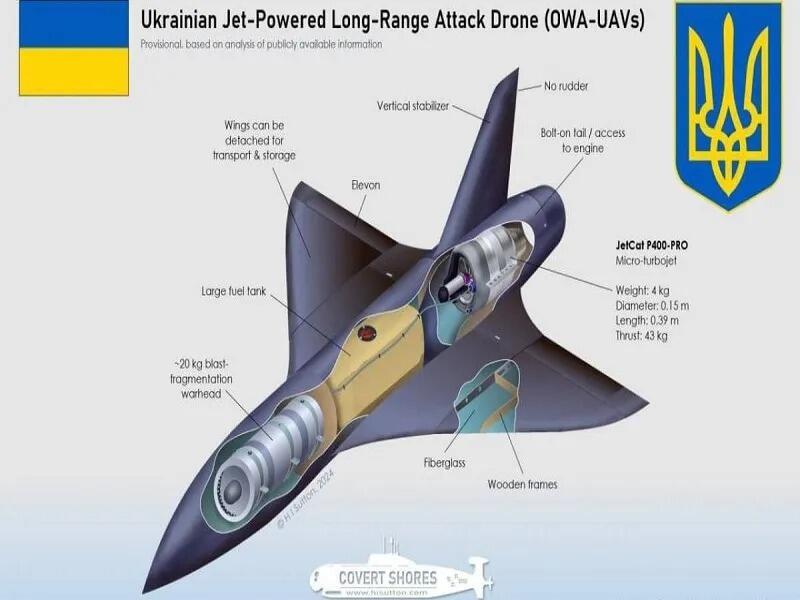Ukraine's New Long-Range Weapon Won't Be The Wunderwaffe That Some Imagine
Authored by Andrew Korybko via Substack,
The Associated Press reported that “Ukraine counts on new long-range weapon to bypass Western restrictions and hit deep into Russia” after Zelensky announced the “Palianytsia” during Ukraine’s 33rd Independence Day celebrations on Saturday.
Defense Minister Umerov was also quoted as writing on Facebook that “This once again proves that for victory, we need long-range capabilities and the lifting of restrictions on strikes on the enemy’s military facilities.”
Palianytsia’s range is equivalent to the ATACMS’.
Therein lies the reason behind the media hype over this new weapon.
Although Kiev claims that it was an entirely indigenous creation, it’s difficult to believe that NATO countries didn’t contribute to it. More than likely, Western military-technical specialists participated in its production, though this might have been done without their political leadership being aware. The goal appears to have been to pressure them into lifting restrictions by Ukraine on the use of their weapons after this fait accompli.
Chinese Special Representative for Eurasian Affairs Li strongly implied as much after he warned earlier this week that Western “super hawks” and members of the military-industrial complex are behind the push for letting Ukraine use their weapons to hit deep inside of Russian territory. About that scenario, Russian Foreign Minister Lavrov also chimed in and accused Zelensky of “blackmailing” the West, which he said would amount to “playing with fire” if they end up going through with it.
The US still doesn’t let Ukraine strike targets deep inside of Russia, even though the precedent is for it to always give Kiev whatever it demands after some time. This delay is attributable both to a desire to control escalation with Russia and to simple pragmatism. After all, if the best weapons were given and deployed right away (after training was completed of course) but didn’t make much of a difference, then there’d be nothing better to give them once they ran out and defeat would soon follow.
It therefore makes sense to start small and exercise restraint before scaling up and easing restrictions. As regards the Palianytsia, while it might have an important tactical purpose if its claimed range is accurate, its real significance is to justify the easing of those aforesaid restrictions on the use of American arms. Ukraine wants policymakers and the public to believe that the Palianytsia was already used and Russia didn’t “overreact” like some expected, so it also won’t “overreact” if ATACMS restrictions are soon lifted.
While this ploy might prove successful, two of the implied points contained within the preceding narrative are counterproductive to Ukraine’s soft power cause. For example, some might question the need for more American arms and financing if Ukraine is already able to supposedly create long-range missiles on its own without any help like it claims just happened. There’s also the question of why the lifting of restrictions is so urgent if Ukraine is winning like it also claims is the case too.
If its military-industrial complex is carrying on just fine without any Western support and its invasion of Kursk has truly been the game-changer that some have presented it as being, then it follows that foreign aid could be curtailed and there’s no reason to risk an escalation with Russia by easing restrictions.
Neither is obviously true, but the fact that Ukraine is still pushing this narrative shows how much more desperate it’s becoming as well as the importance of elite and public opinion on this sensitive issue.
The Palianytsia is therefore more of a psychological weapon than a tactical one due to its envisaged role in reshaping perceptions and getting America to lift its restrictions on using the ATACMS to strike deep inside Russian territory. Even if it succeeds, however, that probably won’t change the military-strategic dynamics of this conflict in Kiev’s favor since Russia continues to gradually gain ground in Donbass, and its impending capture of Pokrovsk could lead to a chain reaction of victories in the coming future.
NEVER MISS THE NEWS THAT MATTERS MOST
ZEROHEDGE DIRECTLY TO YOUR INBOX
Receive a daily recap featuring a curated list of must-read stories.



